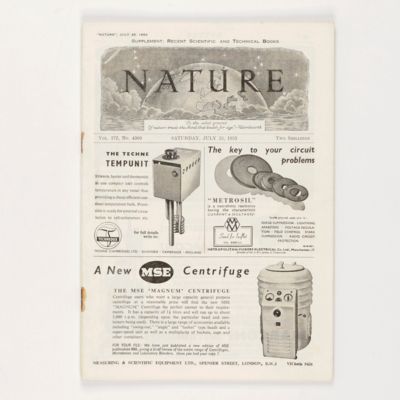Franklin, R. E. and R. G. Gosling
Evidence for 2-Chain Helix in Crystalline Structure of Sodium Deoxyribonucleate.
London, Nature, 1953. 4to (25.4 x 17.9 cm). Volume 172, No. 4369, July 25, 1953. 72 pp. [numbered l-lxviii, 131-172, 1-xii], numerous illustrations [Frankling and Gosling: pp. 156-157; four text illustrations].
The year 1953 saw the Nobel-Prize-winning discovery of the structure of DNA. In Nature (Vol. 171), six essential papers were published, this one is by the British biochemist and crystallographer Rosalind Elsie Franklin (1920-1958), whose contributions to unravelling the structure of DNA were as important as the contributions by Crick and Watson. 'Franklin is best known for her work on the X-ray diffraction images of DNA while at King's College London, particularly Photo 51, taken by her student Raymond Gosling, which led to the discovery of the DNA double helix for which Francis Crick, James Watson, and Maurice Wilkins shared the Nobel Prize in Physiology or Medicine in 1962. Watson suggested that Franklin would have ideally been awarded a Nobel Prize in Chemistry, along with Wilkins but it was not possible because a pre-1974 rule dictated that a Nobel Prize could not be awarded posthumously unless the nomination had been made for a then-alive candidate before 1 February of the award year, and Franklin died a few years before 1962 when the discovery of the structure of DNA was recognized by the Nobel committee' (Wikipedia). An unmarked copy of the 25 July issue. Staples rusty, as usual, otherwise fine.




